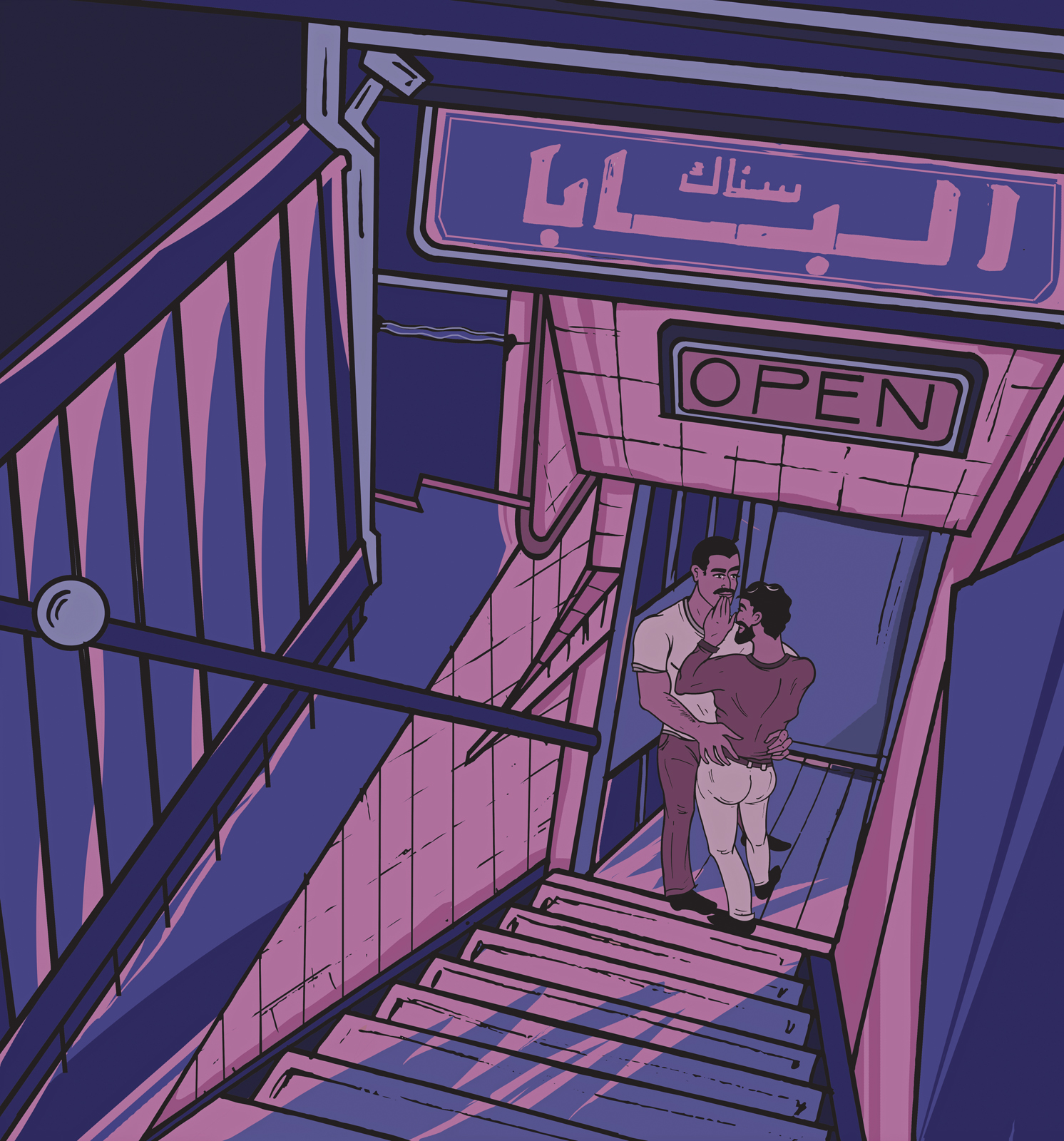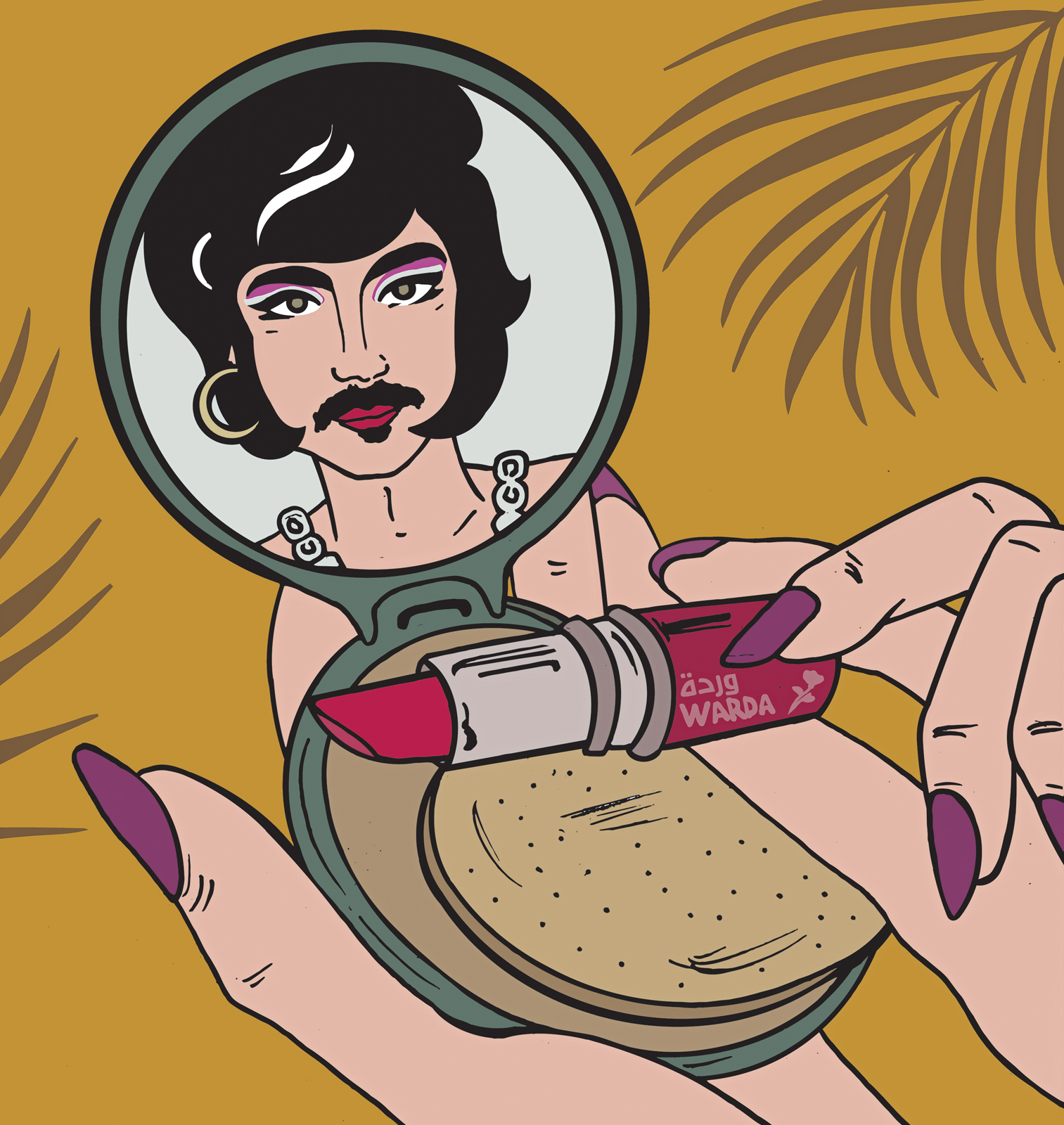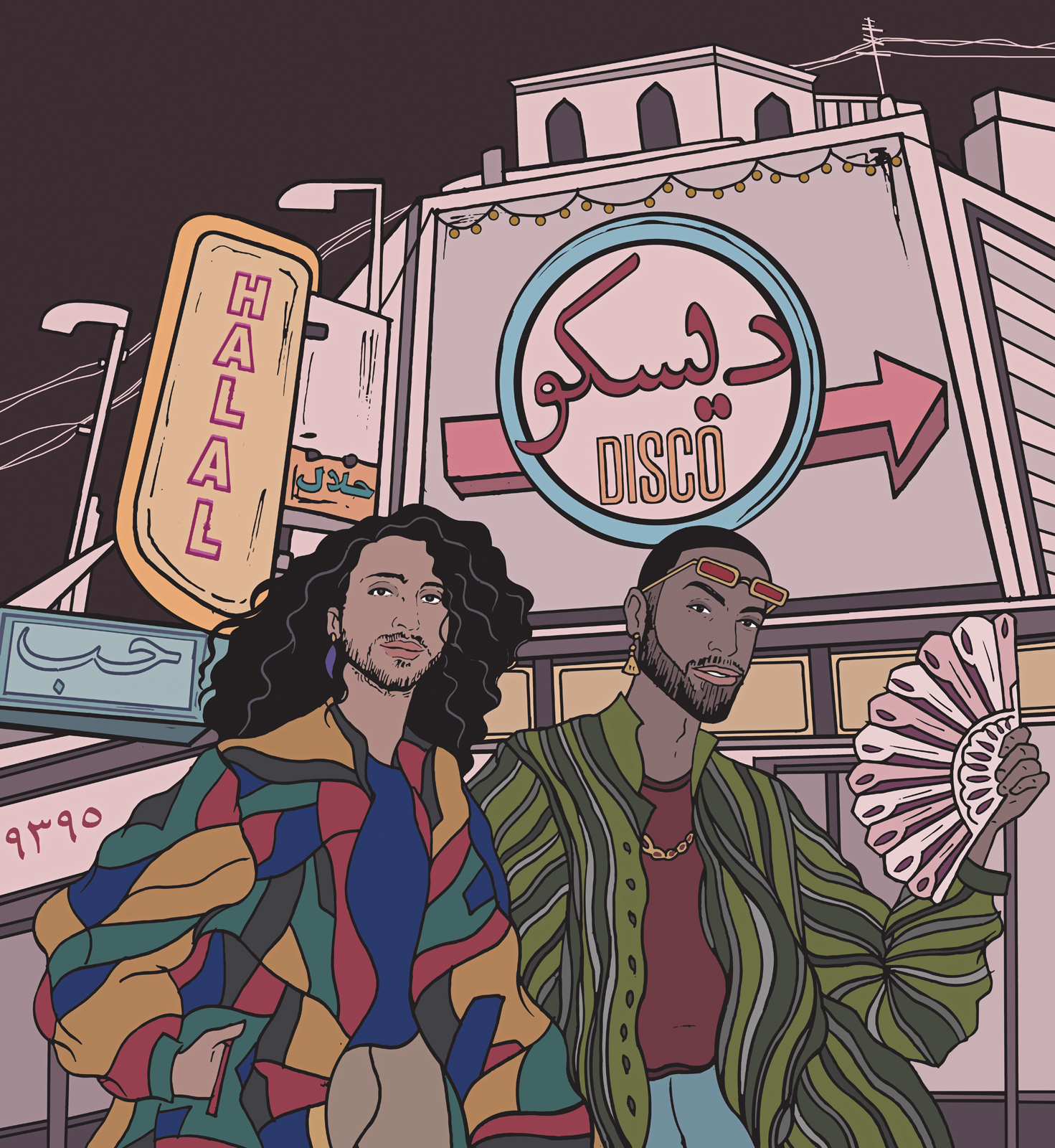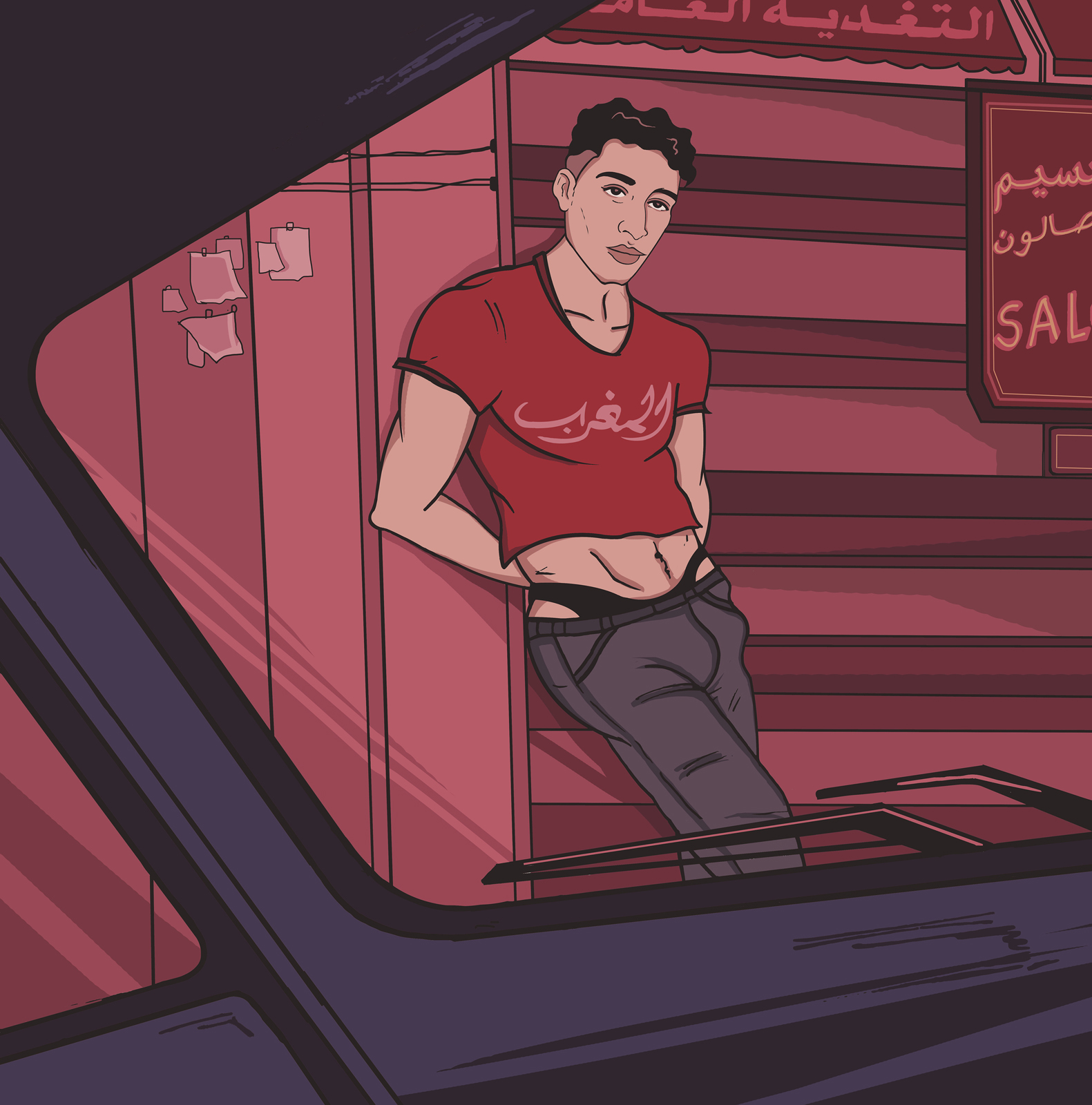ART QUEER HABIBI - PRIDE AND PREJUDICE
PRIDE AND PREJUDICE
THERE’S SOMETHING INHERENTLY RADICAL ABOUT PORTRAYING THE QUEER COMMUNITY IN ARAB COUNTRIES, ARGUABLY ONE OF THE MOST UNDERREPRESENTED COMMUNITIES IN THE WORLD. THE BEAUTY OF ART QUEER HABIBI HOWEVER, IS THAT SAID REPRESENTATION DOES NOT COME BY MEANS OF VICTIMHOOD NOR LEFTIST POLITICAL PROPAGANDA. INSTEAD, THE PSEUDONYMOUS ARTIST CHOOSES TO AFFECTIONATELY AND UNAPOLOGETICALLY DEPICT THE DAILY LIVES OF THOSE WHO LIVE IN A PLACE WHERE MOST WOULD RATHER THEY NEVER EXISTED.
Do you consider yourself foremost an artist or an activist, or both?
I don’t. I don't even have an academic degree in painting, though I started playing around with paints from a young age. I always had different stories in mind that I could recreate and make happen with paper and pencil - that's actually how ArtQueerHabibi started.
My sketches about the LGBT community in Eastern countries were collecting dust on shelves. One day, I showed them to my friends and they encouraged me to make this project happen. I can't honestly tell about my contribution to activism, but if I'm somehow helping society by showing people's lives behind closed doors through the prism of my art, I'm really happy about it as an artist.
In your opinion, what is the hardest thing about being queer in the region?
Fundamentally coded traditions and religious beliefs of the family and society make queer people feel wrong and out of place. Older generations are not eager to change and do not want to accept other points of view. They don't want to accept that there are LGBT people living right besidethem.
There’s a hopeful essence to the way you portray Middle Eastern queer culture. It is very idealistic and romantic. In your opinion, is there a brighter future for the community in the region?
If you take certain MENA-region countries, the future certainly seems hopeful, but the journey has just begun. I think the key to a romantic and idealistic society is education, open information and social awareness.
Do you ever feel like your life could be in danger due to the sensitive nature of your work?
The feeling of danger is always present, not only due to my art, but also to my personal life. I'm not out to my family and most of my friends. I haven’t found the courage to come out yet. Being exposed as a queer artist can have a direct impact on my personal life.
I've also received a lot of hateful comments and inquisitions that almost made me quit ArtQueerHabibi, at some point I had to take abreak from it, but then realized that I did not makethis project to simply quit without a proper fight, especially after noticing the positive impact my project can have on people.
The Middle East is religious, and some might say that religion is the region’s ultimate barrier to queer inclusiveness. You often include religious symbols in the background of your illustrations. Why?
I drew sceneries of cities in ways that madethem easily recognizable by means of famousarchitectural buildings in the background. Many of those buildings happen to be Mosques. I've received some hateful comments about drawing mosques in my backgrounds, although I did so it without any back thought. For me, they werejust recognizable buildings from the region. Sincethen my style, skills and vision for this project have evolved and I learned to depict my vision differently.
What is the biggest misconception people have about Middle East queers?
The biggest misconception about Middle Easternqueers is that all queer men are masculine and women feminine, but that’s not always the case. There are queer Arabs of all kinds, each gifted with a unique personality.
Some people brand Beirut “the gay capital of the Middle East”. Would you agree?
Yes. During the past couple of years, we've seen huge progress - changes in the law (incrimination for being gay no longer exists) and of course BeirutPride that is on its third year. These changes tend to make people feel more secure, and encouragequeer people from the region to move to Beirut.
“I think that the difficulty of being queer in the MENA-region is fundamentally coded in traditions and religious beliefs of family and society.”
Although your art incorporates a lot of local cultural references, it also seems to have an international appeal. Why do you think that is?
At first I wanted to concentrate solely on Lebanon, but quickly decided to broaden it to the MENA region. My followers provide me with incredible localinsights about queer life in the region that inform my pieces. I'm currently working on art related to Sudan and Kurdish people.
What are the advantages and disadvantages of social media for you as an artist?
Social media was a huge advantage for me - you really can't imagine how happy I am as an artist that my project found its target. I have almost 50K organic followers. There was no strategy behind ArtQueerHabibi, I just went with the flow.Seeing its impact encouraged me to continue and grow bigger. As an artist, it is really an honor.
Your work is often inspired by you and your followers’ life experiences. How does that work within your creative process?
I find true stories important, and people seem to relate to them a lot more.People’s willingness to share their personal experiences is very inspiring, andalthough it comes with great responsibility, it is definitely more rewarding.
If you had one advice to give to the Middle Eastern LGBTQI+ community, which one would it be?
I want all of you to stay strong and be strong no matter what. All the hardship you’re going through right now will make you precious and mature. Remember who you are and where you are from and never be ashamed of it - you may be called out for being of color, Muslim, or simply strange, but just remember "We are here and we are queer and you won't erase us".
What’s next for Art Queer Habibi?
I'm currently working on a book about the LGBT people of the MENA-region andtheir habitat. The book will tell a lot of interesting stories and will hopefully help spread awareness. My other project is creating an online platform fully dedicated to advocating equality. It will not only be limited to showcasing my art, but other artists’ work from all disciplines, whether movies, art, interviews and informativecontent about the MENA region’s queer community.









